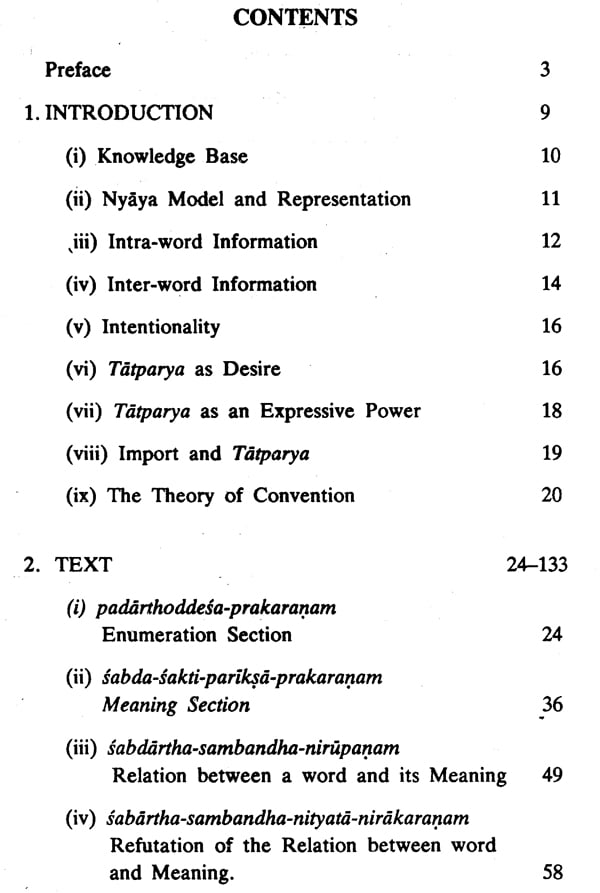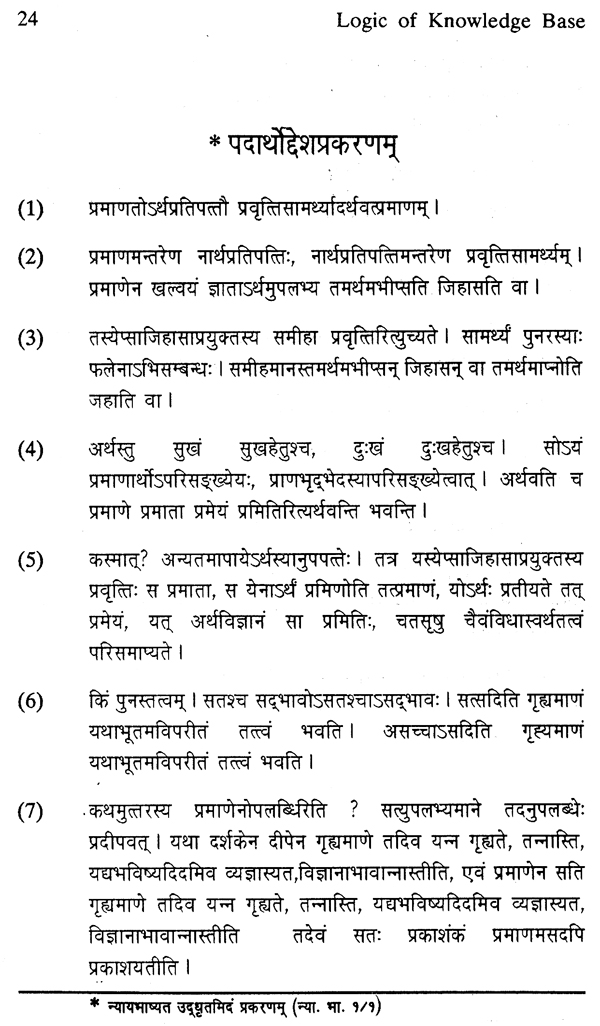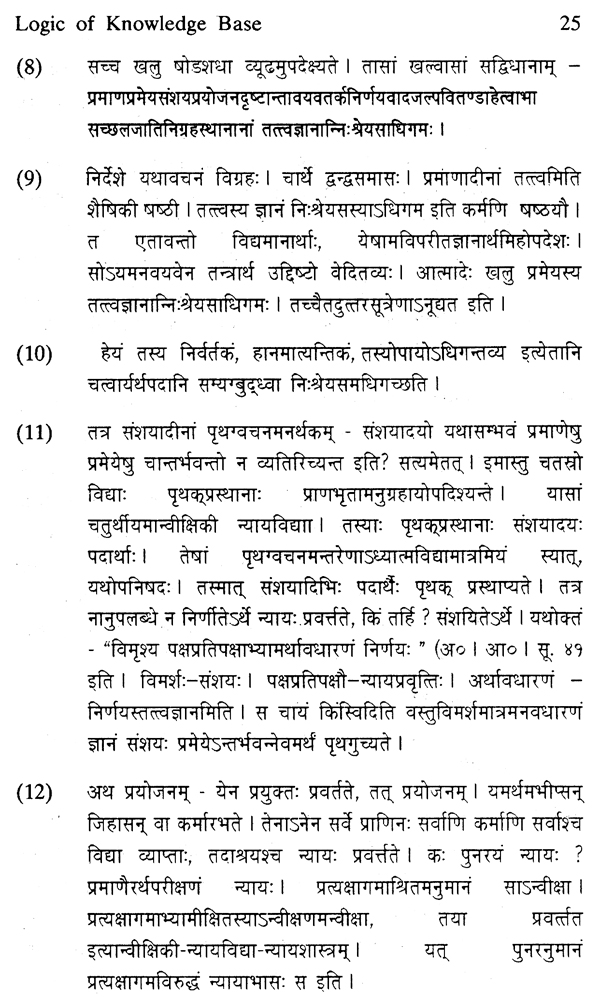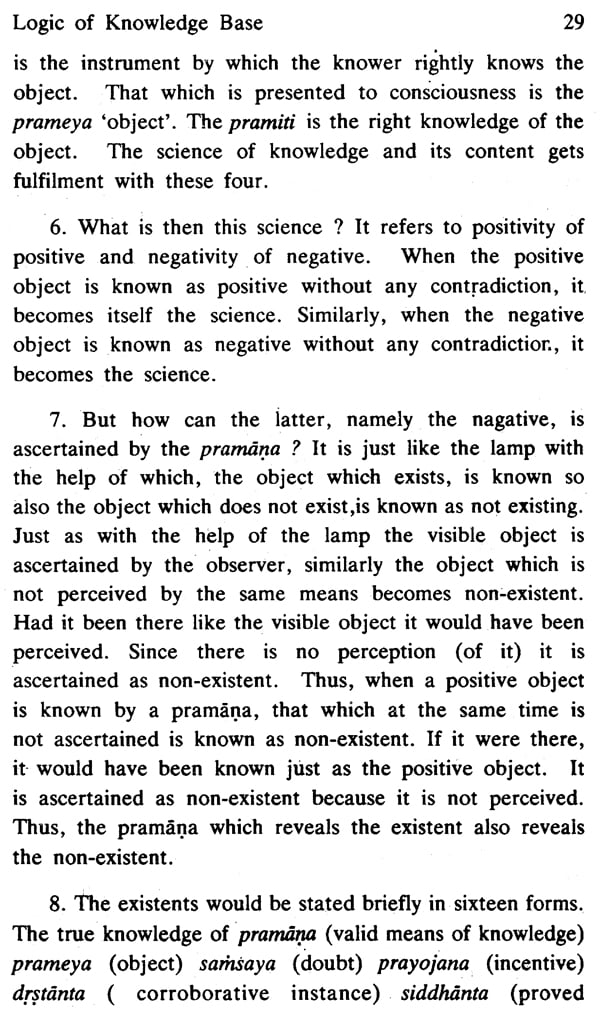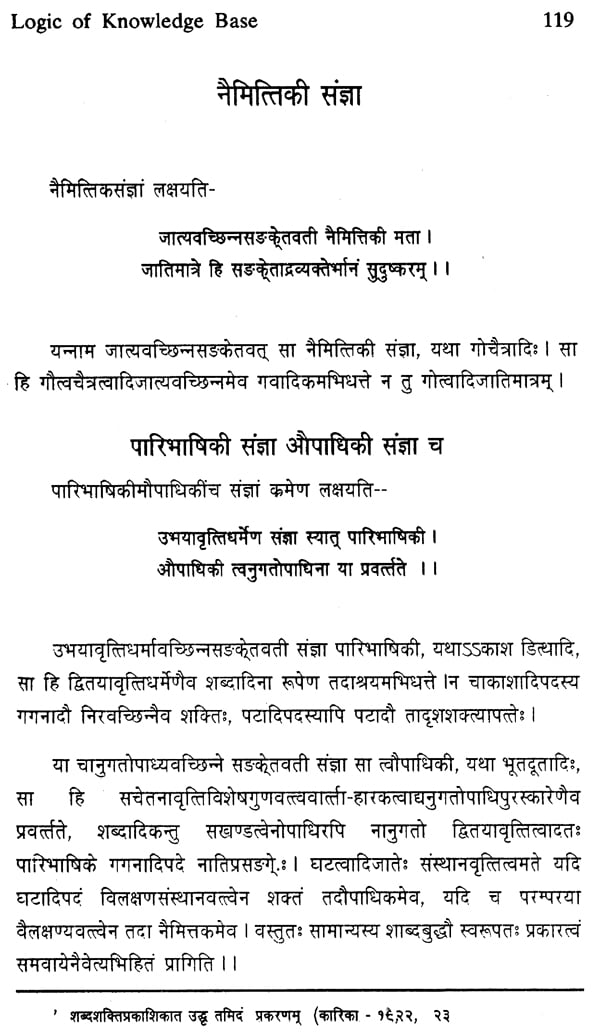
Logic of Knowledge Base (An Old and Rare Book)
Book Specification
| Item Code: | NAS567 |
| Author: | Keshab Chandra Dash |
| Publisher: | Sri Satguru Publications |
| Language: | Sanskrit Text With English Translation |
| Edition: | 1992 |
| ISBN: | 817030346X |
| Pages: | 142 |
| Cover: | HARDCOVER |
| Other Details | 9.00 X 6.00 inch |
| Weight | 300 gm |
Book Description
This work, in its schematic perspective, presents information resources about the structure of a lexicon. It provides a clue to the issue of designing computational lexicon for natural language analysis system. Of course, there is a choice of selecting criteria which incorporates theoretical and subjective predilections for lexicon designers. But this attempt involves a sensibility of rediscovering the Nyaya model which specifies the nature of items associated with a work. As far as the point of lexical recognition in Indian languages is concerned the Nyaya model would be of immense help for deter-mining the semantic properties of a word. Further, some possible storage schemes may be designed and developed on the basis of the theoretical efficiency of this model for operation in computer.
The text consists of the portions from four source texts namely Nyaya-bhasya of Vatsyayana, Nyaya-manjari of Jayanta Bhatta, Tarka-bhasa of Kesava Mishra and Sabda-sakti-prakasika of Jagadisa Tarkalankara.
The topics of the text may be broadly divided into two major sections such as (i) Category information and (ii) subcategory information. The first deals with the aspects of categories enumerated in Nyaya system, the concept of meaning, the relations that subsists between a word and its meaning, the referent of a word, manifoldness of meaning, valid word and aspects of nominals. The second which deals with subcategory information points to a fact that the concept structure of a word ultimately resorts to a referential set up in which its inherent features are determined.
A thought assumes an inherent correspondence between a linguistic form and the object referred to by it. A linguistic form thus becomes a base which has to be a content of consciousness. The form. and content shape themselves into revelation and realisation which, in other words, become knowledge-base and unit of reference respectively when viewed through modern perceptions.
This work, in its schematic perspective, presents information resources about the structure of a lexicon. It provides a clue to the issue of designing computational lexicon for natural language analysis system. Of course, there is a choice of selecting criteria which incorporates theoretical and subjective predilections for lexicon designers. But this attempt involves a sensibility of rediscovering the Nyaya model which specifics the nature of items associated with a word. As far as the point of lexical recognition in Indian languages is concerned the Nyaya model would be of immense help for determining the semantic properties of a word. Further, some possible storage schemes may be designed and developed on the basis of the theoretical efficiency of this model for operation in computer.
The text consists-of the portions from four source texts namely Nyciya-bluisya of Vatsydyana (4th cent. A.D.), Nyiiya-maiijari of Jayanta Batta (10th cent. A.D.), Tarka-blasci of Keava Mishra (13th cent. A.D.) .abda - Sakti praktiati of Jagadisa Tarkalathkara (17th cent. A.D.).
Logic of Knowledge Base 4 Although the arrangement of topics involves the problem of temporal differences a separate historical outline is not necessary as the framework of thought maintains the theoretical balance. The idea of inclusion of original texts is to ensure consistency of a well-defined and developed system as a whole and to show its relevance to the issues that determine the aspects of a word expert system.
The topics of the text may be broadly divided into two major sections such as (i) category information and (ii) subcategory information. The first deals with the aspects of categories enumerated in Nyaya system, the concept of meaning, the relations that subsists between a word and its meaning, the referent of a word, manifoldness of meaning, valid word and aspects of nominals. The second which deals with sub-category information points to a fact that the concept structure of a word ultimately resorts to a referential setup in which its inherent features are deter-mined.
As this volume stems out from the inspirations of my well-wishers I owe my gratitude to all those who enrich my interest.
I express my feelings of indebtedness to Professor V.N. Jha, Director, Centre of Advanced Study in Sanskrit, University of Poona, Pune, Professor P.K. Mukhopadhyaya, Professor of Philosophy, Centre of Advanced Study in Philosophy, Deptt. of Philosophy, Jadavpur University, Calcutta, Professor Radha Vallabh Tripathy, Professor & Head, Deptt. of Sanskrit, Dr. H.S. Gour University, Sagar (M.P.) who always encourage me in different ways for higher and deeper learning.
**Contents and Sample Pages**
